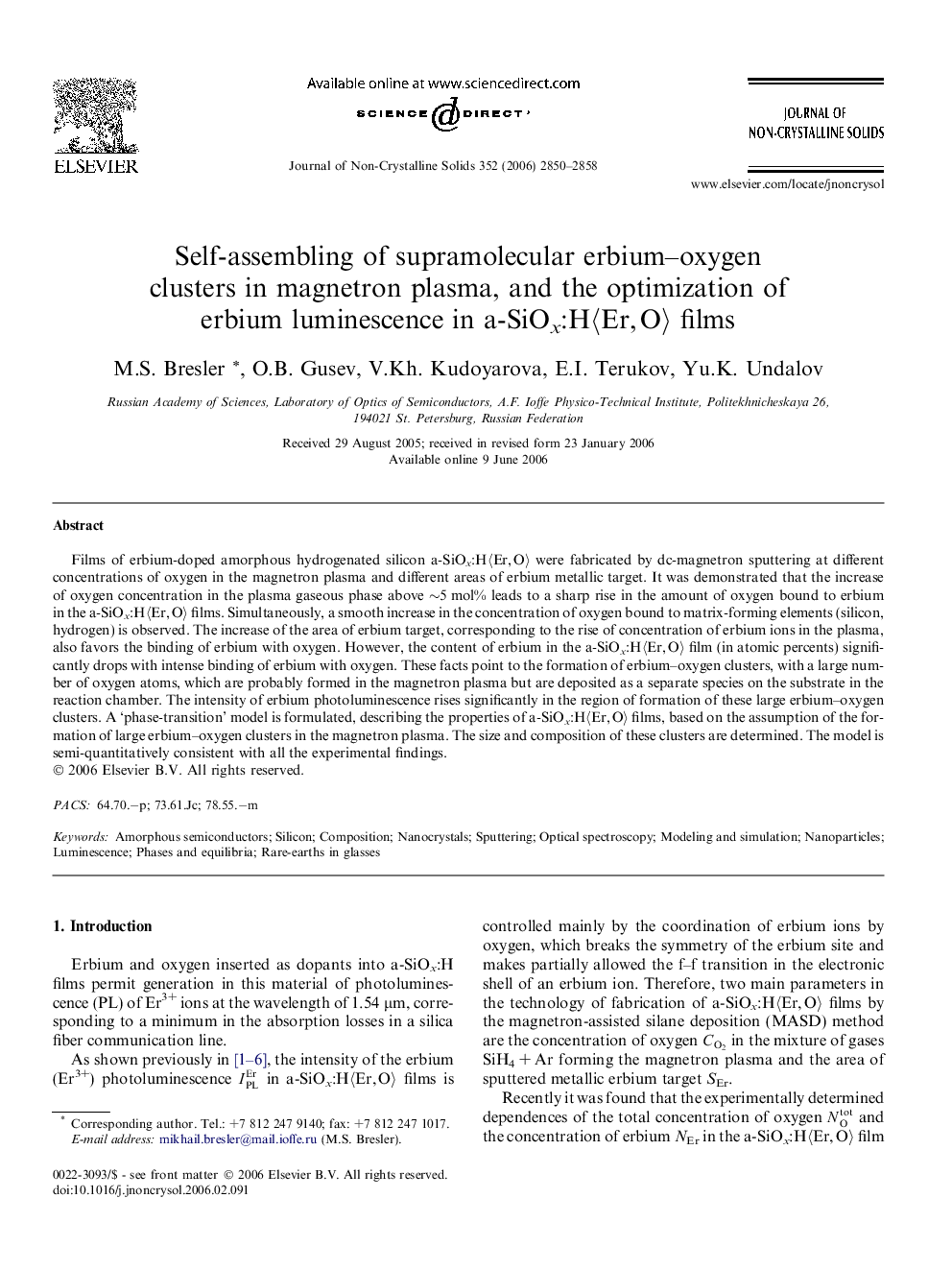| Article ID | Journal | Published Year | Pages | File Type |
|---|---|---|---|---|
| 1485810 | Journal of Non-Crystalline Solids | 2006 | 9 Pages |
Abstract
Films of erbium-doped amorphous hydrogenated silicon a-SiOx:HãEr, Oã were fabricated by dc-magnetron sputtering at different concentrations of oxygen in the magnetron plasma and different areas of erbium metallic target. It was demonstrated that the increase of oxygen concentration in the plasma gaseous phase above â¼5 mol% leads to a sharp rise in the amount of oxygen bound to erbium in the a-SiOx:HãEr, Oã films. Simultaneously, a smooth increase in the concentration of oxygen bound to matrix-forming elements (silicon, hydrogen) is observed. The increase of the area of erbium target, corresponding to the rise of concentration of erbium ions in the plasma, also favors the binding of erbium with oxygen. However, the content of erbium in the a-SiOx:HãEr, Oã film (in atomic percents) significantly drops with intense binding of erbium with oxygen. These facts point to the formation of erbium-oxygen clusters, with a large number of oxygen atoms, which are probably formed in the magnetron plasma but are deposited as a separate species on the substrate in the reaction chamber. The intensity of erbium photoluminescence rises significantly in the region of formation of these large erbium-oxygen clusters. A 'phase-transition' model is formulated, describing the properties of a-SiOx:HãEr, Oã films, based on the assumption of the formation of large erbium-oxygen clusters in the magnetron plasma. The size and composition of these clusters are determined. The model is semi-quantitatively consistent with all the experimental findings.
Keywords
Related Topics
Physical Sciences and Engineering
Materials Science
Ceramics and Composites
Authors
M.S. Bresler, O.B. Gusev, V.Kh. Kudoyarova, E.I. Terukov, Yu.K. Undalov,
